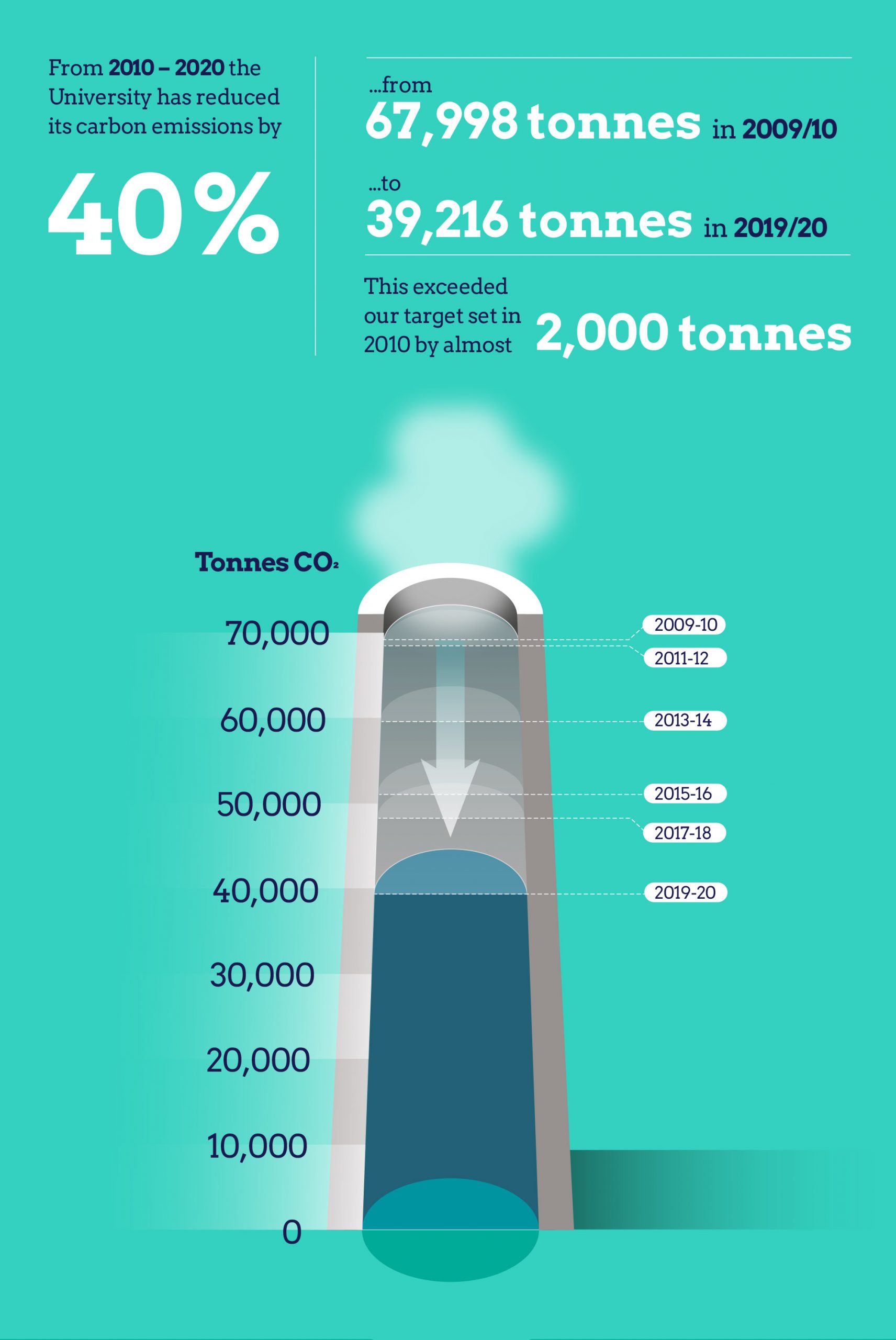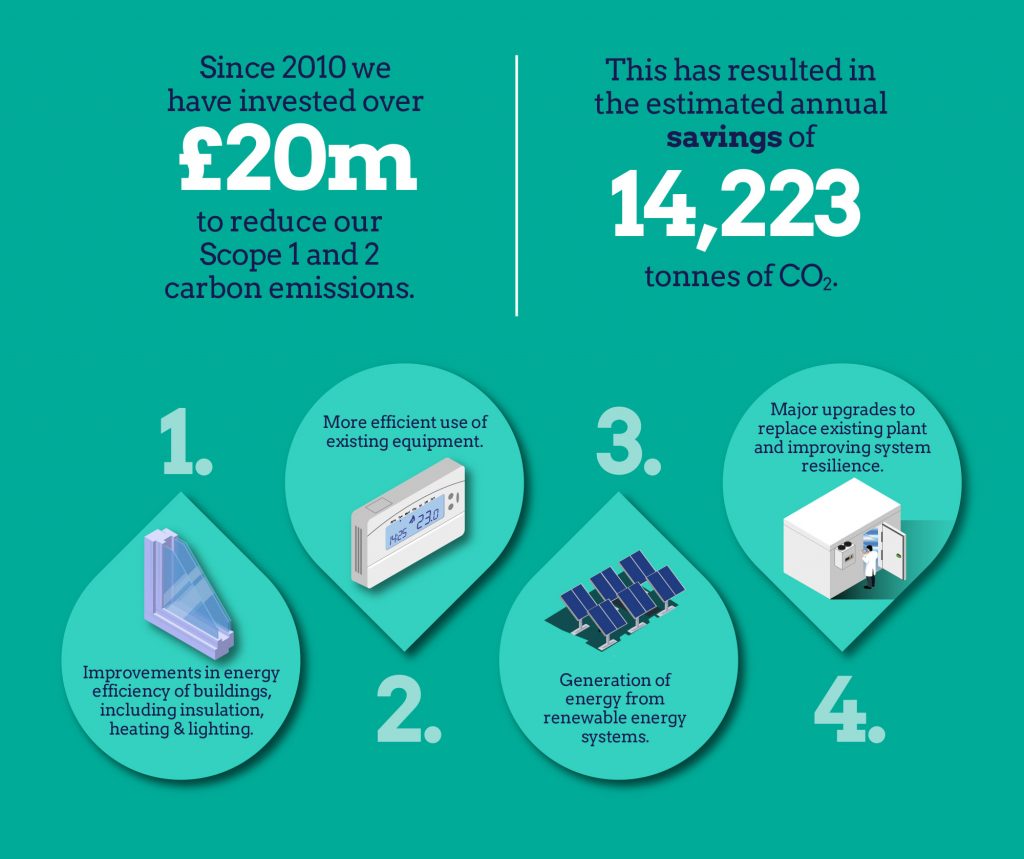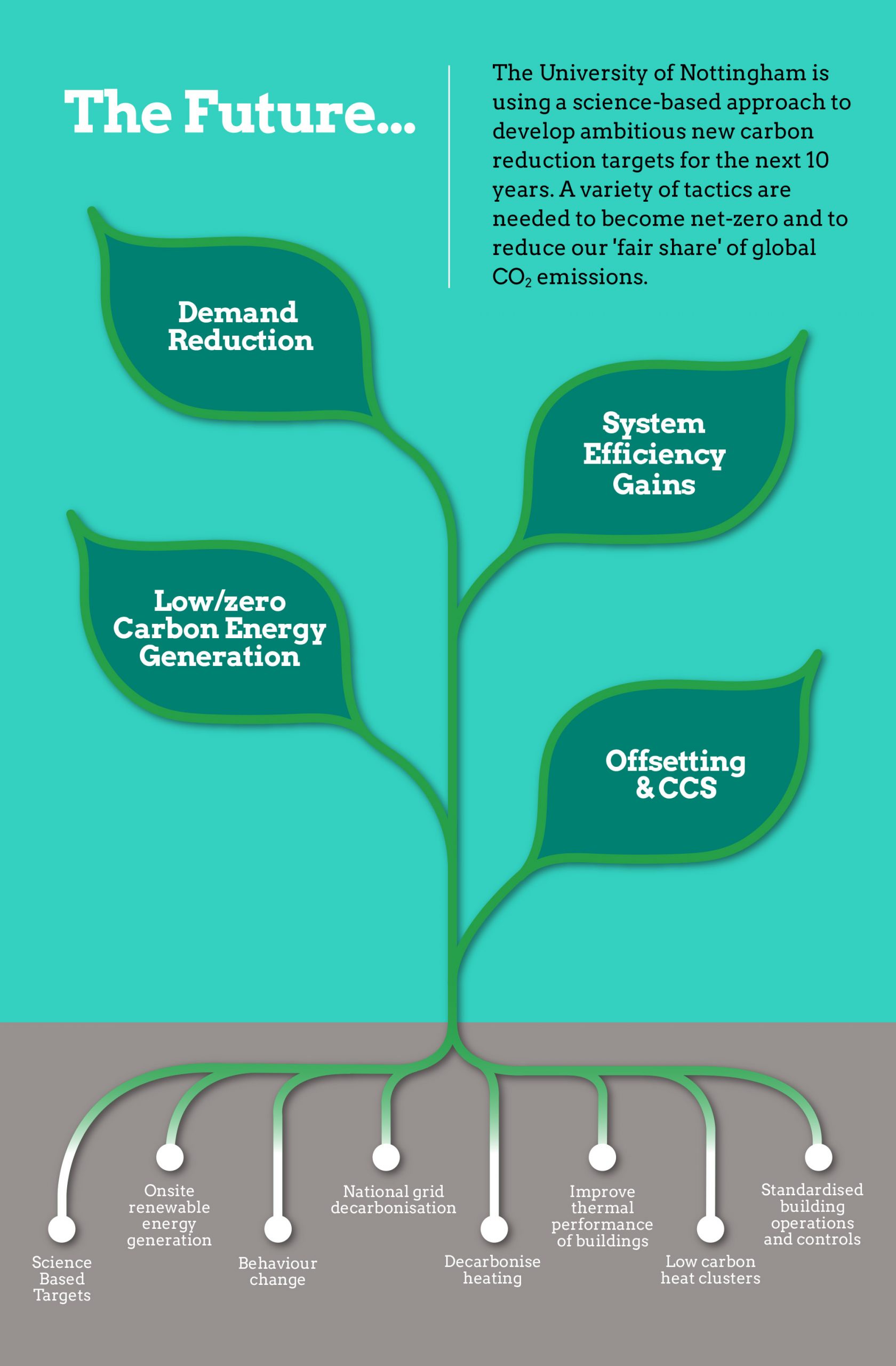
January 25, 2021, by sustainablenottingham
Reducing the University’s carbon emissions

At the end of 2020 we were pleased to announce that the University had achieved significant reductions in energy use and carbon emissions over the last 10 years.
In 2019/20 alone, our scope 1 (mainly gas and other fuels) and scope 2 (purchased electricity) carbon dioxide emissions reduced by 10% or 4,386 tonnes from 2018/19.
Overall, there has been a 40% reduction in carbon emissions since 2010, and the targets developed in our 2010-2020 Carbon Management Plan were exceeded by 1,784 tonnes.
The impact of Covid-19
The Covid-19 pandemic and national lockdown measures have unsurprisingly accelerated these reductions. In March 2020 our campuses moved into a state of hibernation, with buildings closed and energy use and carbon emissions displaced into homes. We saw electricity use reduce in April, May and June 2020 by 43%, 44% and 41% respectively.
How have we reached our carbon targets?

There have been several routes taken to save energy and reduce our emissions. New installations and more efficient systems, renewable technology and capitalising on efficiencies have all been needed. Over the last decade we have also benefitted from the National Grid increasingly powering the country with renewable and zero carbon energy.
The roadmap below shows some examples of the specific interventions we have deployed over the past 10 years.
The hidden impact of fume cupboards
There are 650 fume cupboards within the labs at UoN, each capable of using as much energy as a home. Before our interventions, 40% of fume cupboards were left running 24/7. This was at a cost of £1,250 and created 12t of CO2 per fume cupboard per year.
Increased energy efficiency has been achieved by reducing the amount of warm air they extract from the lab. The simplest way to save energy is to make sure they are turned off when not in use. Turning them off at nights and weekends cuts CO2 emissions by 75%.
However, many must remain on for extended periods. For these, the greatest savings are achieved by installing variable volume extract system and automated sash controls with research showing that for fume cupboards that operate 24/7, this saves £1,200 and 8t CO2 a year.
The road to net zero

We are now developing a new Carbon Management Plan with ambitious science-based targets to reduce the University’s emissions ever further. This approach calculates the level of carbon reduction needed to meet the Paris climate agreement and the UK Government’s aim of becoming carbon zero by 2050.
We will be aided by the further decarbonisation of electricity from the National Grid. However, the use of gas and how we heat our buildings will be the major challenge. A ‘fabric first’ approach will reduce demand through improving the energy efficiency of buildings. This will be complimented by increasing the number of low/zero carbon renewable energy technologies across our campuses.
Finally, offsetting and carbon capture and storage (CCS) solutions will be needed for the carbon emissions that remain.
Alongside all of this we are developing a communications strategy, based on behavioural change theory, to facilitate a culture shift in environmental attitudes. We will empower staff and students to act sustainably in all aspects of their life and enable everyone to contribute towards supporting the University’s carbon targets and the United Nations Sustainable Development Goals.
If you have any ideas on how we can reduce carbon emissions, or if you have implemented measures in your work area that are reducing energy use, please let is know at sustainabilty@nottingham.ac.uk.
No comments yet, fill out a comment to be the first


Leave a Reply